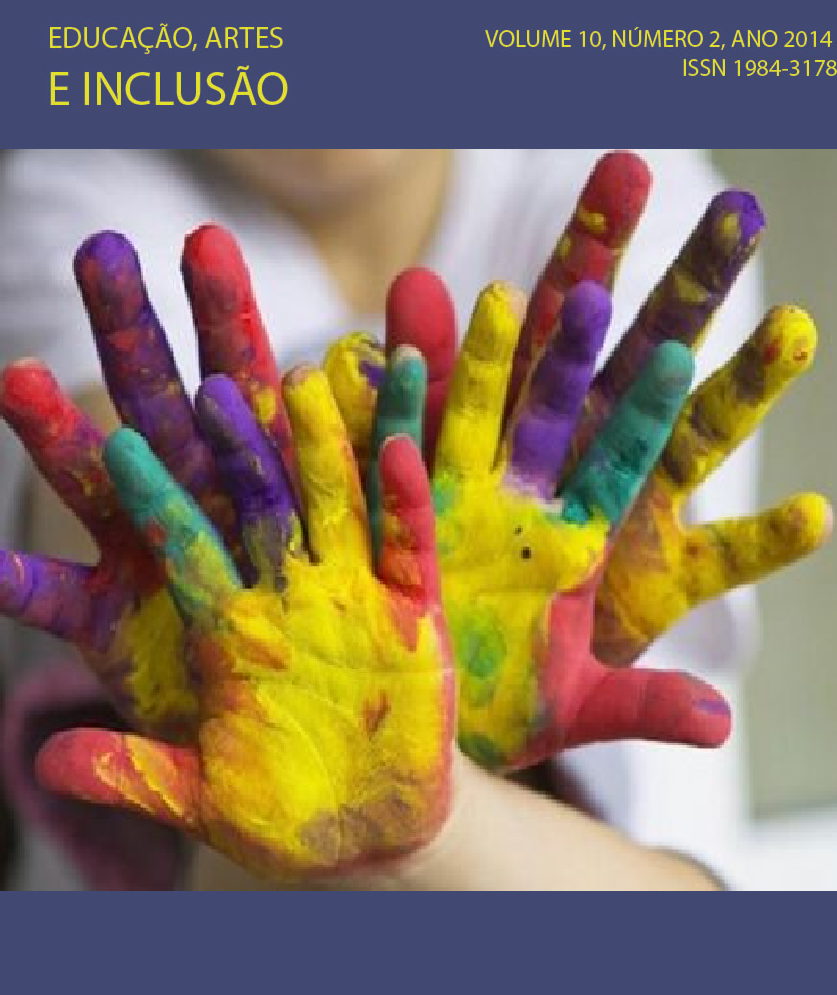APRENDIZAGEM MUSICAL E DISTÚRBIO DO PROCESSAMENTO AUDITIVO CENTRAL: RELATO DE UM CASO
DOI:
https://doi.org/10.5965/198431781022014009Palavras-chave:
Processamento auditivo, DPAC, aprendizagem musical, inclusão, formação de professores,Resumo
Resumo: A capacidade do cérebro em interpretar os sons ao nosso redor de forma consciente e funcional denomina-se Processamento Auditivo Central. Pessoas com Distúrbio do Processamento Auditivo (DPAC) podem desenvolver problemas na alfabetização, memória, ou organização em geral, além de sérios problemas na aprendizagem musical. Portanto, o objetivo deste artigo é promover uma reflexão sobre a aprendizagem musical e sua relação com o processamento auditivo relatando o caso de uma aluna com DPAC inclusa em um contexto pedagógico musical de uma tradicional escola de música do Estado de São Paulo. O embasamento teórico foi retirado de artigos científicos publicados nas mais importantes bases de dados, bem como, de livros das áreas de música e processamento auditivo. Para o relato de caso, foram utilizadas as anotações das intervenções pedagógicas do prontuário da aluna de música. As discussões concluem que há uma grande relação entre a dificuldade de aprendizagem musical e o Distúrbio do Processamento Auditivo, como também, a possibilidade de diminuição dessas dificuldades a partir de intervenção terapêutica e pedagógica musical adequada.Downloads
Downloads
Publicado
Como Citar
Edição
Seção
Licença
A Revista Educação Artes e Inclusão é um periódico que segue a Política de Acesso Livre. Os artigos publicados pela revista são de uso gratuito, destinados a aplicações educacionais e não comerciais. Os artigos cujos autores são identificados representam a expressão do ponto de vista de seus autores e não a posição oficial da Revista Educação, Artes e Inclusão [REAI].
Autores que publicam nesta revista concordam com os seguintes termos:
(a) Autores mantém os direitos autorais e concedem à revista o direito de primeira publicação, com o trabalho simultaneamente licenciado sob a Licença Creative Commons Attribution que permite o compartilhamento do trabalho com reconhecimento da autoria e publicação inicial nesta revista.
(b) Autores têm autorização para assumir contratos adicionais separadamente, para distribuição não-exclusiva da versão do trabalho publicada nesta revista (ex.: publicar em repositório institucional ou como capítulo de livro), com reconhecimento de autoria e publicação inicial nesta revista.
(c) Esta revista proporciona acesso público a todo o seu conteúdo, uma vez que isso permite uma maior visibilidade e alcance dos artigos e resenhas publicados. Para maiores informações sobre esta abordagem, visite Public Knowledge Project.
Esta revista está licenciada com uma Licença Creative Commons Atribuição-NãoComercial 4.0 Internacional. Esta licença permite que outros remixem, adaptem e criem a partir do seu trabalho para fins não comerciais, e embora os novos trabalhos tenham de lhe atribuir o devido crédito e não possam ser usados para fins comerciais, os usuários não têm de licenciar esses trabalhos derivados sob os mesmos termos.





